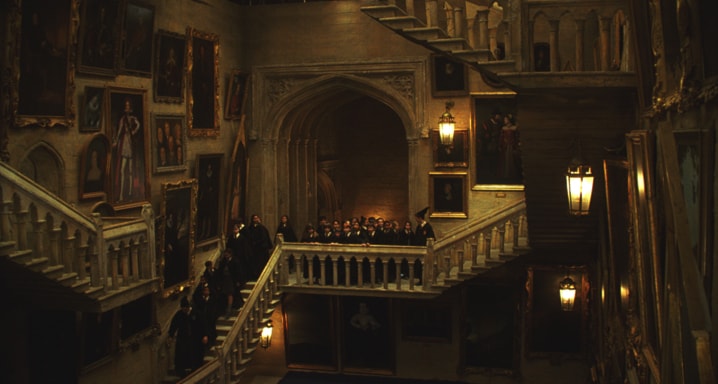As a teenager, Karl Sisson was blown away by the prehistoric special effects in the Steven Spielberg movie Jurassic Park.
“It was just amazing what they did at that time,” Sisson said of the 1993 movie that resurrected on celluloid a herd of long-necked apatosauruses, flying pterodactyls and one terrifying tyrannosaurus rex.
Two decades later, the Red Deer native is using his own visual effects skills to help other filmgoers step into magical worlds — such as those created for the Harry Potter and Narnia films, as well as Twilight, John Carter and The Incredible Hulk.
He was also part of the CGI (computer generated imagery) team behind the visuals in Life of Pi. The movie is in the running for a Best Visual Effects Oscar at the 2013 Academy Awards on Feb. 24.
Vancouver-based Sisson helped create the interior of the ship that the film’s hero is travelling in, which later capsizes, leaving Pi floating in a life boat with a Bengal tiger. “They’d built part of the interior, but it’s quite a large ship,” Sisson said, so a digital effects team was assembled to create photo-realistic imagery depicting the depth and breadth of the vessel’s interior.
Another of his high-profile projects, Harry Potter And the Deathly Hallows: Part 2, required that Sisson relocate to England to help shade the magical ceiling above the Hogwarts dining hall that reveals stars and clouds.
The digital matte painter also added dimension to some of the picture frames surrounding the moving paintings that hang along the main staircase at Hogwarts, as well as architectural details behind the paintings.
When it comes to visual effects, “I’m a generalist, a jack-of-all-trades,” said the former Red Deer College visual arts student, who was mostly interested in art and science while attending Lindsay Thurber Comprehensive High School.
Sisson figures knowledge of both has helped him in his career, which took off in 2004, right after he graduated from the renowned computer animation program at Sheridan College in Oakville, Ont.
The science comes in handy when trying to understand the physical properties of various materials — whether it’s wood, metal, stone — or even fabrics such as velvet or satin. “You have to have an understanding of why things do what they do,” said Sisson, who noted that light rays are reflected, diffused or absorbed, depending on the material.
He often labours to match CGI lighting on matte paintings with the conditions that surround real actors, to create a seamless effect. Once there’s a comprehension of how light plays off objects, creating surface effects “is really all about layering” to replicate the look of various properties using computer tools.
The creativity sparked by Sisson’s childhood interest in drawing is what film companies look for when hiring, said the digital artist. At the same time, he describes his job as requiring a balance between the personal touches he can bring to a project and working within the larger framework of what a director wants.
“Especially towards the project’s completion, you have to stay close to what the director is looking for because it’s their vision.”
While Sisson regretfully didn’t meet Clint Eastwood, he worked on Eastwood’s films Changeling, and contributed realistic lighting on CGI soccer fans in Invictus.
While living in England, Sisson also helped give dimension and surface texture to the walls of a desert island city in The Chronicles of Narnia: Voyage of the Dawn Treader.
His work can be seen in Blades of Glory, Dragonball Evolution, Vantage Point, Beowulf and Resident Evil: Apocalypse. He also made what he considers small contributions to Twilight and District 9.
“It’s funny, you can enjoy watching a film,” said Sisson, “but whenever your scene comes on, or you see the parts you worked on, it totally pulls you out of the movie. You think about what you did do and what you didn’t do and you totally lose your objectivity.”
One of Sisson’s most involved projects was working on John Carter, which had a massive CGI team of hundreds of people, because a whole imaginary planet had to be created. He recalled, “It was fun to work on because it was with a good bunch of people and it was challenging.” Sisson helped “light” some of the outdoor scenes.
One of his favourite jobs was working on a documentary film about experimental aircraft that was designed during the Second World War but never taken beyond the blueprint stage.
Sisson was among the CGI artists who examined the old plans, researched building materials available at the time and digitally “built” these planes in three dimensions.
“I like fantasy, but I’m kind of a history buff. I like historic things and bringing to life a world that’s gone,” said Sisson, who sites the Napoleonic-era sailing movie Master and Commander — which he didn’t work on — as one that really “brings you into that world.”
So far, his creative career has been fulfilling and has allowed the married father of two to experience living in the U.K. as well as Los Angeles.
Sisson can’t remember a particular moment when he knew he wanted to work in the film business. The realization occurred to him over time; “It was something I was good at and (eventually) I thought, I want to work in the movies.”
If other kids share the same dream, he encourages them to keep drawing and dreaming. “Work hard at what you’re interested in and you might end up doing it for a living.”
lmichelin@www.reddeeradvocate.com
